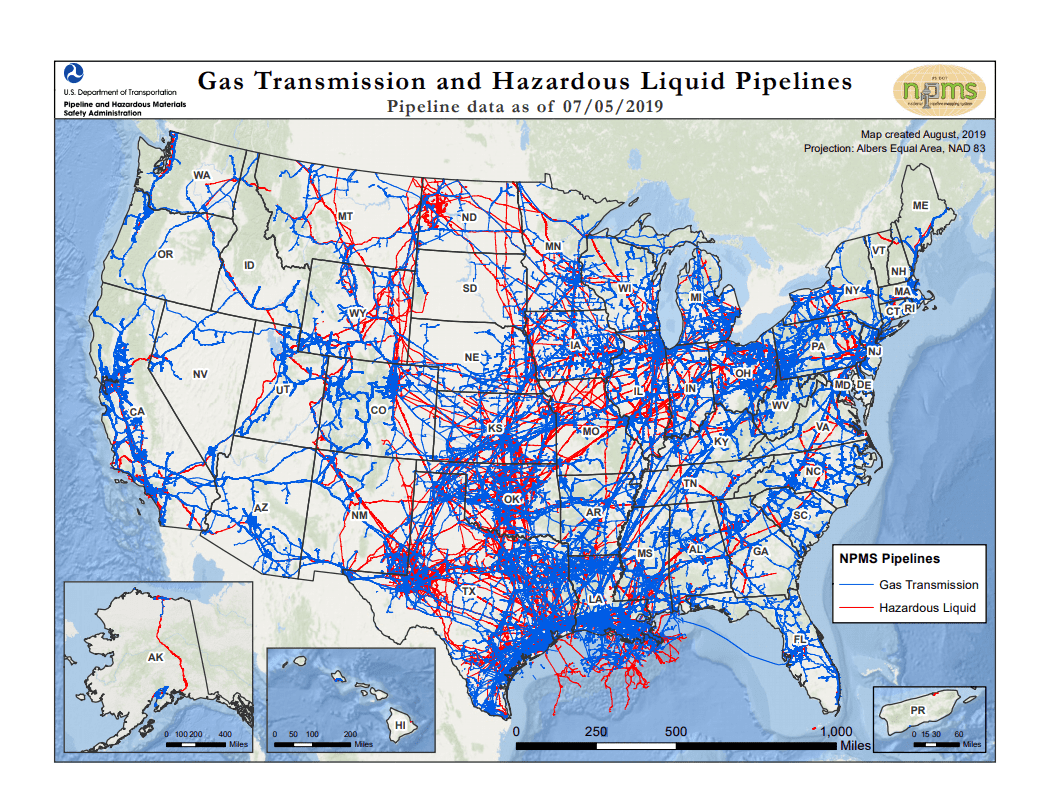Pipelines exist almost everywhere. Natural gas is delivered directly to homes in relatively small-diameter distribution lines buried under the street and even backyards. Larger cross-country transmission pipelines delivering gasoline, home heating oil, or moving crude oil or natural gas are actually easier to find.
Nearly the entire mainline pipe is buried, but other pipeline components, such as pump stations, are above ground. Some lines are as short as a mile, while others may extend 1,000 miles or more.
Although a large number of pipeline systems cover distances similar to these, not all petroleum markets are as distant from the point of supply as others. Some pipelines start from ports, such as San Diego or San Francisco, and serve inland areas in California and the southwestern U.S. region. Each region of the country has some unique aspects. Very few pipelines actually cross the highest parts of the Rocky Mountains since the distances are long and the population centers small, but smaller refineries and regional pipelines serve these areas as well.
- The United States has the largest network of energy pipelines in the world, with more than 2.4 million miles of pipe.
- The network of crude oil pipelines in the U.S. is extensive. There are approximately 72,000 miles of crude oil lines in the U.S. that connect regional markets.
Pipeline companies keep in touch with local emergency responders along pipeline rights-of-way and work and sometimes train with fire departments or hazardous materials units.
One useful source of pipeline location information is the National Pipeline Mapping System (NPMS). The NPMS shows pipelines at the county by county scale. Government officials and emergency response officials have access to information at a more detailed scale.


